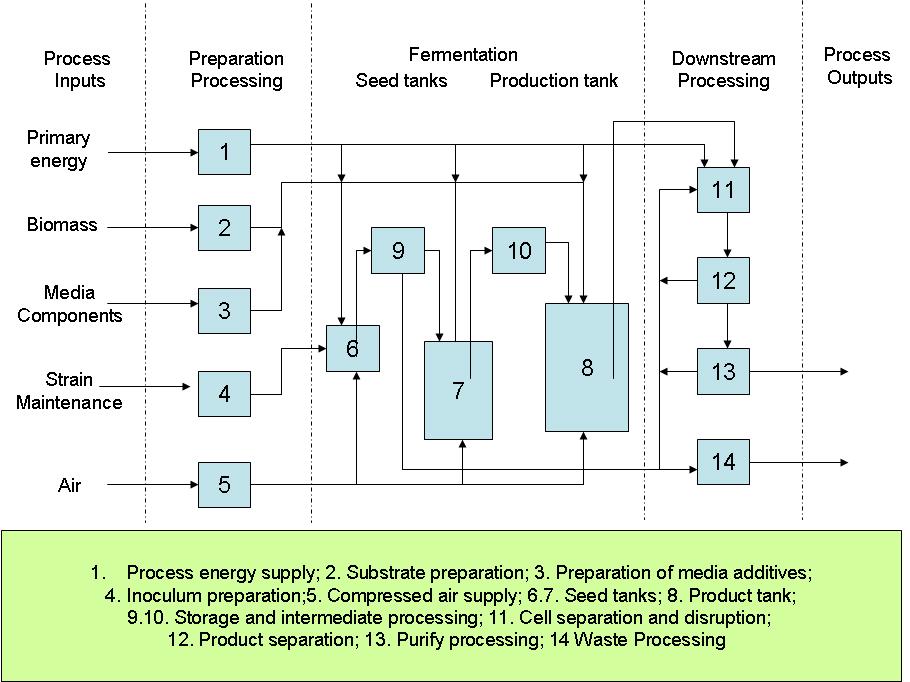Team:Edinburgh/Modelling
From 2008.igem.org
(Difference between revisions)
(→Produce Process Model) |
|||
| Line 1: | Line 1: | ||
<div id="header">{{Template:Team:Edinburgh/Templates/Header}}</div> | <div id="header">{{Template:Team:Edinburgh/Templates/Header}}</div> | ||
| + | |||
| + | |||
| + | ==Process Considerations== | ||
| + | |||
| + | In developing a commercial version of the 'Edinburgh Process' for conversion of cellulose to starch, the following points must be considered: | ||
| + | |||
| + | * Some of the glucose released by cellulose hydrolysis will be used by the 'Micromaize' organisms for growth and enzyme synthesis. We therefore envisage use of an 'aerobic' process (rather than an anaerobic process, as envisaged by most developers of cellulose bioconversion processes) to minimise the amount of glucose which is used in this way, leaving the maximum amount of glucose available for conversion to starch. | ||
| + | * Aerobic processes are more expensive to operate than anaerobic processes due to the greater cost of aeration, mixing, and cooling. However, cellulose degradation is intrinsically slower than use of soluble substrates, so the power requirements for aeration and mixing are expected to be much lower than for a typical aerobic process, and it may be possible to use a non-traditional bioreactor such as a rotating drum device, rather than a more usual (and more expensive) aerated stirred tank reactor. | ||
==Modelling== | ==Modelling== | ||
Revision as of 10:06, 28 October 2008
Contents |
Process Considerations
In developing a commercial version of the 'Edinburgh Process' for conversion of cellulose to starch, the following points must be considered:
- Some of the glucose released by cellulose hydrolysis will be used by the 'Micromaize' organisms for growth and enzyme synthesis. We therefore envisage use of an 'aerobic' process (rather than an anaerobic process, as envisaged by most developers of cellulose bioconversion processes) to minimise the amount of glucose which is used in this way, leaving the maximum amount of glucose available for conversion to starch.
- Aerobic processes are more expensive to operate than anaerobic processes due to the greater cost of aeration, mixing, and cooling. However, cellulose degradation is intrinsically slower than use of soluble substrates, so the power requirements for aeration and mixing are expected to be much lower than for a typical aerobic process, and it may be possible to use a non-traditional bioreactor such as a rotating drum device, rather than a more usual (and more expensive) aerated stirred tank reactor.
Modelling
Equation of fermentation reaction
CH1.8O0.5N0.2 + 0.41915O2 = 0.62CH1.77O0.49N0.24 + 0.0512NH3 + 0.2745H2O + 0.38CO2
Produce Process Model
H.-J. Rehm and G. Reed. Biotechnology, Vol.4: Measuring, Modelling and Control.
 "
"

